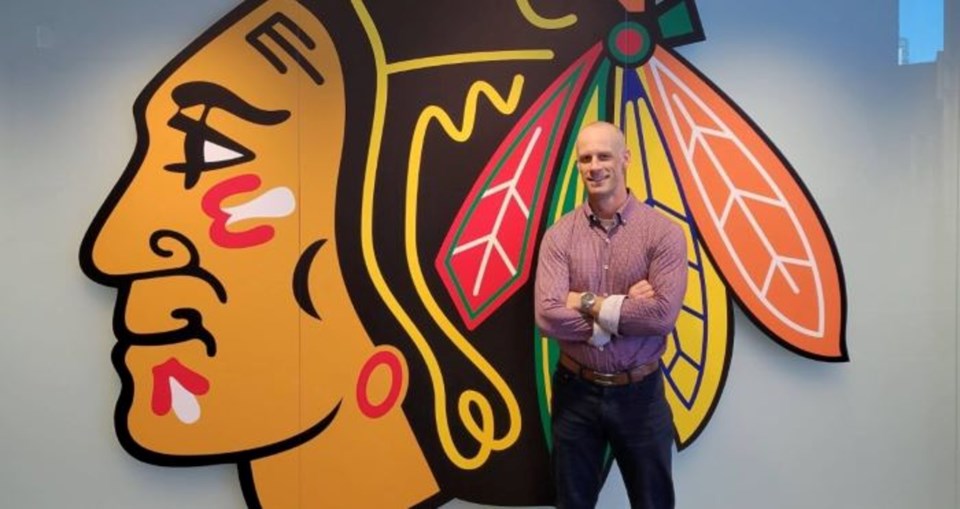The following article was supplied by the University of Guelph media services.
When Jamie Burr began his career in health sciences, the University of Guelph professor did not imagine the journey would take him all the way to the NHL But as professional sports organizations have invested in sport analysis, it has led them to researchers like Burr.
As the high-performance advisor for the Chicago Blackhawks, Burr’s role is to improve the team’s training and performance regimen, using his background in health and performance research. The Human Health and Nutritional Sciences professor brings a wealth of experience, having trained as a cardiac physiologist who previously worked with Olympic athletes and as a consultant for various professional teams.
“In recent years there has been a revolution in hockey to embrace sports science,” he explains. “What I bring to the team is the scientific approach.”
A professional sports organization employs a medical team, trainers, physical therapists, dieticians, mental health professionals and strength and conditioning coaches among analysts, data scientists and researchers. Sport science – including the study of physiology, psychology, biomechanics and nutrition – combines those disciplines.
“My role is to help bridge those silos,” Burr says. “Sport science is about being able to ask the right questions, measure the right things, and help provide insight into how and why things work the way they do to affect performance.”
Burr works with the Blackhawks’ Hockey Strategy and Analytics team, who use data to identify patterns, make predictions and ultimately, decisions about players and their physical conditioning. Assessing a variety of factors can affect how a player trains, how they perform on the ice, and also helps them to recognize if and when they are pushing their bodies beyond capacity and how to recover from injuries that can occur as a result.
“The game’s gotten a lot faster and the data has become much more advanced. The skills required for a role like this are an understanding of physiology and the ability to work with large data sets because a lot of these decisions are driven by numbers now. It is a little bit of art and science.”
- Jamie Burr
Hockey is a sport steeped in tradition, Burr says. While each team has its own strategy for performance development, he estimates only a handful have roles similar to his, whereas sport science has long been a factor in professional baseball and football.
Burr’s passion for sport stems from his own days as a varsity athlete, coach and trainer. As the director of the Human Performance and Health Research Laboratory in the College of Biological Science, what drives his research is the need to understand what makes an athlete the best at their sport. Is it individual training, inherited physiology, lifestyle decisions, or a combination of them all?
It’s a balance, he says, not to feel inundated with unnecessary metrics but to gather enough information that helps him advocate for the players while also educating them about sport science.
“It can be overwhelming, the amount of things that can be measured,” he says. “The trick is knowing what to do with the numbers.”
Prior to his time with the Blackhawks, Burr’s work focused on the cardiovascular effects of exercise on athletes of all kinds, to learn how they impact health and performance. In addition to the fitness aspect of training, Burr is also focused on nutrition and sleep science, two factors that significantly impact a team that travels across time zones to play 82 games every season.
Burr also works with the Blackhawks’ AHL affiliate, the Rockford IceHogs, developing players before they come to the Chicago franchise, a key strategy for a team in a rebuilding year.
For the next three years, Burr will split his time between Chicago and U of G , where he continues to supervise graduate students, some of whom have worked with the team on hydration testing.
“I love watching students realize the theoretical concepts introduced in lecture and lab are the same things we use to inform the decisions we make with some of the best athletes in the world,” he says. “It’s nice to see our work move the needle.”
